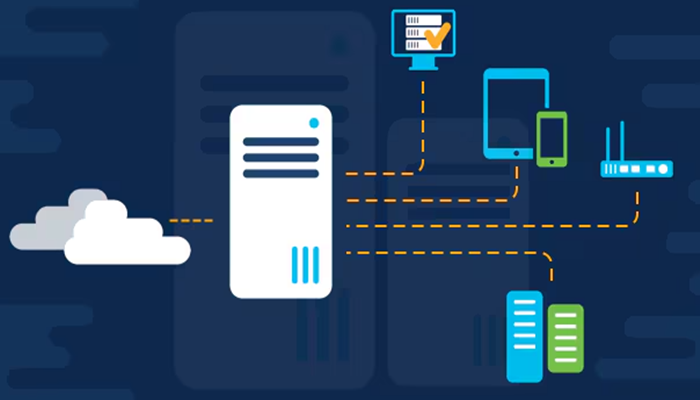Every employee’s wish is to walk into the office with just a thin, lightweight laptop in hand and yet have access to all the powerful computing resources you need to run complex applications. You can access vast amounts of data and collaborate seamlessly with colleagues worldwide.
That’s not a dream anymore! Welcome to the Virtual Desktop Infrastructure (VDI) in cloud computing. Here, your desktop environment is no longer tied to a physical device. It exists in the cloud, accessible from anywhere at any time.
Virtual Desktop Infrastructure
Virtual Desktop Infrastructure is a technology that allows you to host desktop environments on a centralized server and deliver them to end-users on request. In simple terms, it is like having your computer desktop hosted in the cloud.
When you use VDI, you are not running applications and processes on your local machine. Instead, they are executed on remote servers. This means you can access your desktop from any device without compromising performance or security.
Why is VDI Important in Cloud Computing?
With the rapid rise of remote work, VDI has become an essential component of modern IT infrastructures.
Anywhere, Anytime Access:
VDI allows users to access their desktop environments from anywhere in the world. This flexibility is invaluable for businesses with remote teams or employees who travel frequently.
Security:
Since data is stored in the cloud rather than on individual devices, VDI reduces the risk of data breaches from lost or stolen hardware. Centralized control also means updates and security patches can be applied more efficiently.
Cost-Effective:
By reducing the need for powerful local machines and minimizing maintenance requirements, VDI can significantly cut down IT expenses.
Scalability:
Whether you’re a small startup or a large enterprise, VDI allows you to scale your IT resources up or down as needed. This ensures you only pay for what you use.
How Does VDI Work?
At its core, VDI operates through three main components:
Hypervisor– This software creates and manages virtual machines on the server. Each VM acts as a separate desktop environment for users.
Connection Broker – Think of this as the traffic cop of VDI. It authenticates users and connects them to their virtual desktops. This ensures smooth data transfer between the user’s device and the server.
Virtual Desktop – This is the environment that users interact with. It includes the operating system, applications, and user data—all hosted on the cloud server.
Getting Started with VDI
Interested in exploring VDI for your organization? Here is how:
- Assess your organization’s requirements and determine if VDI is a good fit. Consider factors like remote work needs, security requirements, and budget.
- Look for a reputable cloud service provider that offers VDI solutions tailored to your industry and needs.
- Work with your IT team to plan a seamless deployment, ensuring all users can transition smoothly to the new system.
- Continuously monitor your VDI performance and user feedback to optimize the system for better efficiency and user satisfaction.
To conclude
Virtual Desktop Infrastructure in cloud computing transforms the whole workspace environment. By decoupling the desktop environment from physical hardware, VDI offers flexibility and security that traditional setups can’t match. As businesses and educational institutions utilize this technology, the question isn’t if VDI will become the norm but when.
https://aws.amazon.com/what-is/vdi/
https://www.geeksforgeeks.org/what-is-virtual-desktop-infrastructure-vdi/

